A visit to the flight line at Brim Aviation, a utility operator based in the small city of Ashland in southern Oregon, is a pretty unique experience. Not only is it somewhat unusual to see a fleet that includes the entire family of MD Helicopters’ civilian rotorcraft, but given that all but one of Brim Aviation’s aircraft have a NOTAR anti-torque system rather than a traditional tail rotor, it’s one of the quietest fleets you’ll find.

Now in its 25th year of operation, Brim Aviation operates one MD 902 Explorer, three MD 600Ns, leases an MD 520N when required, and flies a Leonardo A109SP Grand New on a bar pilot transfer program in Astoria, Oregon.
The company is owned by Burl and Julie Brim. Burl became hooked on helicopters after taking a ride in a Robinson R22 at a county fair in the early 1980s. While continuing his career as an excavator building roads and installing underground utilities, Burl gained his commercial pilot certificates, purchasing his first aircraft (an R22) in 1993 — the year Brim Aviation was established.
The company started out by offering flight instruction and aerial rides, and within three years had added two more R22s to its fleet. By 2000, two Robinson R44s had joined the fleet, and Brim had gained certificates for part 133, 135 and 137 operations (for external load, air carrier and operator, and agricultural operations, respectively). Its work had expanded to include fish and game census operations and some firefighting support, and it gradually phased out of flight training.

It was around this time that Brim made the move to a bigger aircraft — and one that would define its future. Its acquisition of an MD 500E expanded its animal capture work, brought in wild horse and burro herding, and helped secure firefighting contracts with the U.S. Forest Service and the Oregon Department of Forestry. It also took the company into the realm of power line maintenance and the annual Christmas tree harvest.
Burl liked flying the MD 500E so much, he sold the company’s R44s and added two more 500s to the fleet over the next couple of years — one E model and one D model. Although the aircraft were successful, Brim ultimately found that further development of the utility market would require a move away from the 500.
“The utility market for the 500 series was saturated, so I was looking at the next model that would give me more access to market share,” he told Vertical. “I looked at [Bell 206L] LongRangers, [Bell] 407s and [Airbus AS350] AStars, but had experienced such great success running the MD 500s that I looked at the MD 600N. I went to the factory and took a test flight and was sold.”
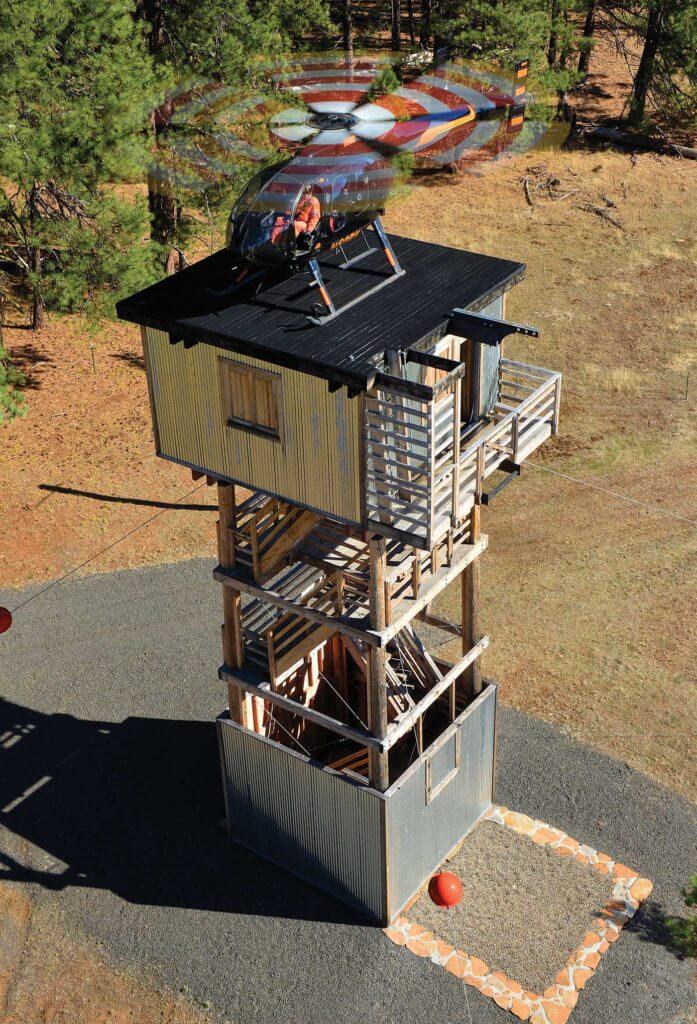
Brim bought a used 600N and put it into utility work.
“No one in the U.S. had been doing utility work with them, so there was a lot to learn — but it has proved to be a very strong performer,” said Burl, adding the benefits of the aircraft’s NOTAR (which is derived from “NO TAil Rotor) anti-torque system quickly became apparent.
“I did a drill support job in Alaska and found that I could land in tighter confines with the 600 than with the 500s due to the NOTAR being able to sit down in the wispy willows that we were working in [amongst].”
The NOTAR system works through the use of an enclosed variable-pitch composite blade fan to produce a low pressure, high volume of ambient air to pressurize the composite tailboom.

This air is then expelled through two slots that run the length of the tailboom on the starboard side, causing a boundary-layer control called the Coanda effect. This effectively turns the tailboom into a “wing” flying in the downwash of the rotor system, and this produces up to 60 percent of the anti-torque required in a hover, according to MD. The remainder of the aircraft’s directional control is accomplished through the use of a rotating direct jet thruster at the end of the tailboom.
In forward flight, the vertical stabilizers provide the majority of the anti-torque, but the direct jet thruster still provides directional control.
“I’m a strong supporter of the NOTAR concept,” said Burl. “The safety they provide is second to none, in both field and off-site operations, [and when] having people working close to the helicopters, [as] they simply cannot walk into a tail rotor. The NOTAR is also very quiet — which is always good — and has proven to be very reliable and low maintenance.”
The company had such a positive experience with the 600 that it soon added a 520N — the NOTAR-equipped version of the 500 — to its fleet.

“We were working powerlines in urban areas and experienced way less noise complaints,” said Burl. “There were neighborhoods [where] we always had complaints when using the 500s, that, with the 520s and 600s, they never knew we were there.”
Burl said the aircraft also became very popular with fish and wildlife biologists. “We were conducting waterfowl surveys and found that the ducks, geese and cranes were hardly even bothered by the NOTARs, which in turn allowed the biologists much more time to count the different kinds of birds. We experienced the same [lack of reaction] with large animals such as elk, moose and deer.”
A broad range of operations
Today, there are two companies associated with Burl Brim’s company: the helicopter operations division under Brim Aviation; and Air Rescue Systems (ARS) — a company that provides specialized advanced training and equipment for a variety of operations within the helicopter industry.

With its one MD 902 (Brim plans to add another to its fleet in the near future) and three MD 600Ns, Brim Aviation performs a huge variety of work, including aerial firefighting, animal capture and tagging, powerline construction and support, mountain and river rescues, Christmas tree harvesting, logging support, and aerial photography. It even responded to requests for help in Houston, Texas, following the destruction of Hurricane Harvey. There, it provided search-and-rescue (SAR) assets and support for the bar pilot transfer program in Houston.
“Brim Aviation has a large breadth of operational experience, so there are few missions we aren’t familiar with,” said Julie Brim. “One of our specialties is precision longline work, [and we have been] teaching Chinese police officers the finer skills of police aviation. Also, we have MD 600s in Puerto Rico at the moment providing support for the rebuilding of the electrical system on the island. We expect to be working there for the foreseeable future.”
For the Columbia bar pilot hoist program, Brim uses a Leonardo A109SP. The aircraft transfers ship pilots out to large cargo vessels beyond the mouth of the Columbia River near Astoria, Oregon. The flights take place 24 hours a day, 365 days a year, over some of the roughest ocean weather in the continental United States. The flights can take place in low visibility conditions, with fog and rain a normal occurrence.

The seas can reach 25 feet (eight meters), so using a helicopter is much safer and faster than using boats. The flight only takes about 20 minutes, as the helicopter makes a direct approach, enters a hover, and puts the pilot onto the ship (or removes him or her) as efficiently as possible. Burl said the A109SP is well suited to the program.
“It has plenty of power, great single engine performance, a strong tail rotor, and is just plain fast,” he said. “It’s quite a machine, and performs well for us.”
Burl said the idea for ARS was the born out of the need for a
dedicated training, equipment and response company within the industry. ARS was formed by Burl together with Bob Cockell, who now oversees the company. It specializes in specially purposed and designed equipment for the helicopter industry, with a particular emphasis on human external cargo missions. ARS manufactures this equipment with design criteria that is specific to short haul and hoisting missions.
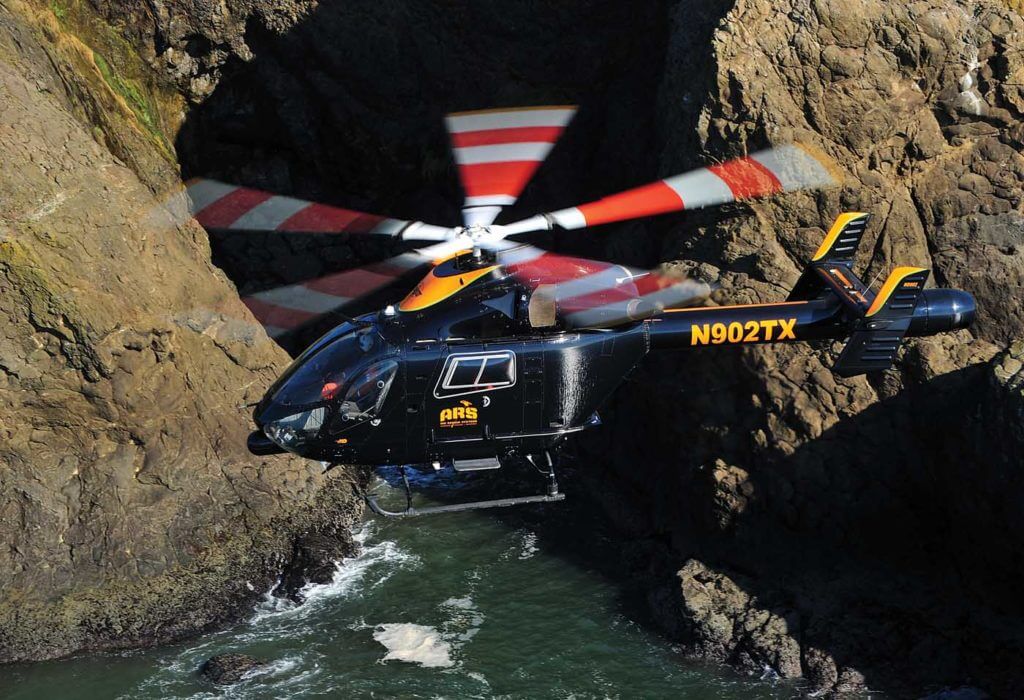
ARS also put together an experienced team of instructors who have thousands of hours of experience and thousands of rescue and short haul missions under their belts. ARS instructors train personnel around the world in the specialized techniques the company has developed and in the use of ARS equipment.
ARS and its engineering and manufacturing department are located in Ashland at the Brim Aviation facility. ARS has approximately 25 employees, with 12 working in the Falkland Islands supporting the British Forces South Atlantic Islands SAR operations. These employees crew the two Leonardo AW189s located on the islands and perform both civilian and military SAR support.
A NOTAR fleet
The company has now phased out its own 500s and 520s, preferring the 600N due to its capabilities and economics (according to Brim, it operates the 600N for basically the same hourly cost as the 500E, but with higher overall performance). A further bonus of the 600N is a larger cabin, which offers the flexibility to add more seats.
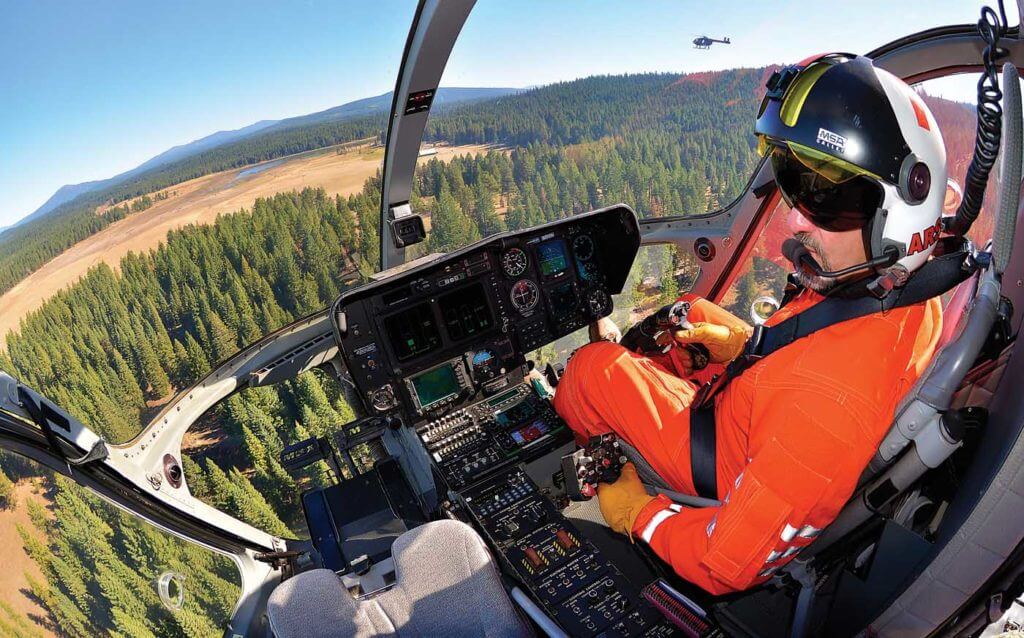
Still, Brim Aviation leases a 520N when required.
“The 520 is a great aircraft, and with the NOTAR it can land in smaller areas with much more safety than a tail rotor bird, particularly in the bush,” said Burl. “It’s a very smooth aircraft, and this is appreciated after a long day of flying. We also found it to be a superb photography platform — again, because of its smoothness. Down low, it’s a good performer, and can lift a bit more than a MD 500E, but once you go to altitude, the MD 500E becomes the better performer.”
The 600N is a stretched version of the 520N, with the addition of a powerful 800 horsepower Rolls-Royce C47 engine. This results in a fast, maneuverable, and powerful machine, said Burl. “It’s also a pilot’s machine, and needs to be understood to get maximum performance out of it,” he said. “The aircraft takes specific techniques to fly effectively, and is best suited for an experienced pilot with good low speed, stick-and-rudder skills. It’s an underrated aircraft, but is very rewarding to fly, and we have found it to perform very well — even at higher altitudes and hot conditions.”
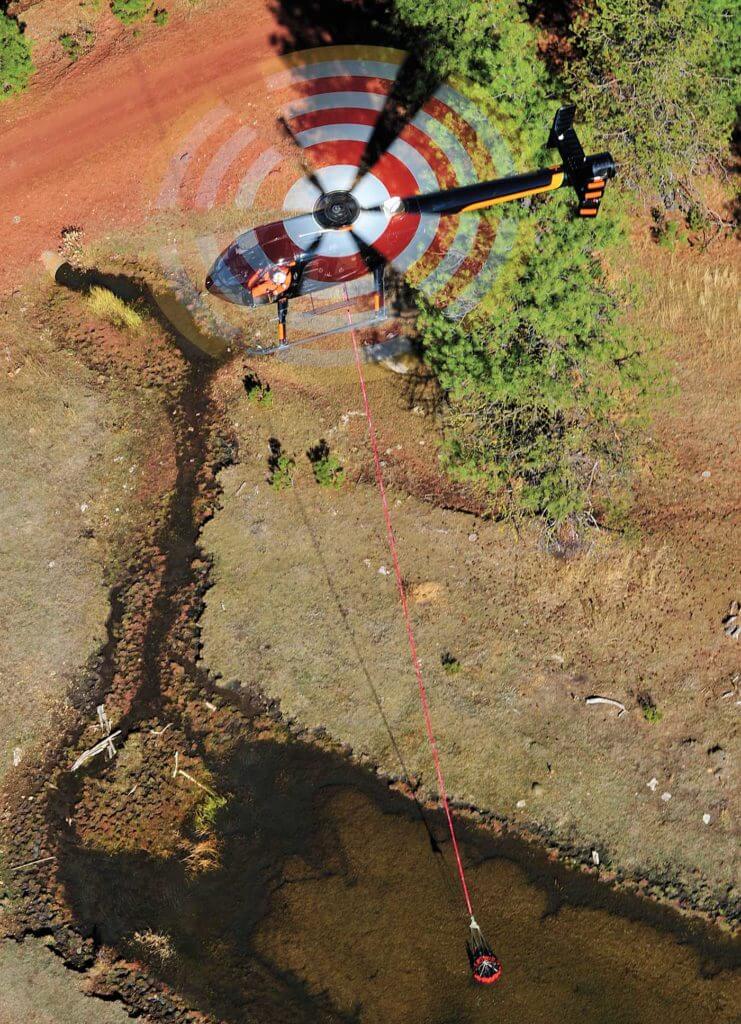
Brim said it had the first supplemental type certificate for a belly hook on a 600N, which makes it much more useful for the huge amount of utility work these aircraft perform.
However, Burl said the 902 is his favorite aircraft, praising the aircraft’s reliability, safety, smoothness of flight, and quietness of operation. “It has unbelievably good cockpit forward visibility — top of its class,” he said. “As a rescue aircraft, the large unobstructed cabin is perfect, and the rear clamshell doors give us flexibility. The large sliding rear cabin door works great during hoisting operations, and the engine produces plenty of power.”
Burl said the company “obviously really likes” MD products, and praised the support his company gets from the manufacturer. “We have found the factory support to be excellent in both maintenance training/pilot training and overall product support,” he said. “When we call them, they always seem to be able to help us with any issues we are having. I find them to be good, knowledgeable people.”
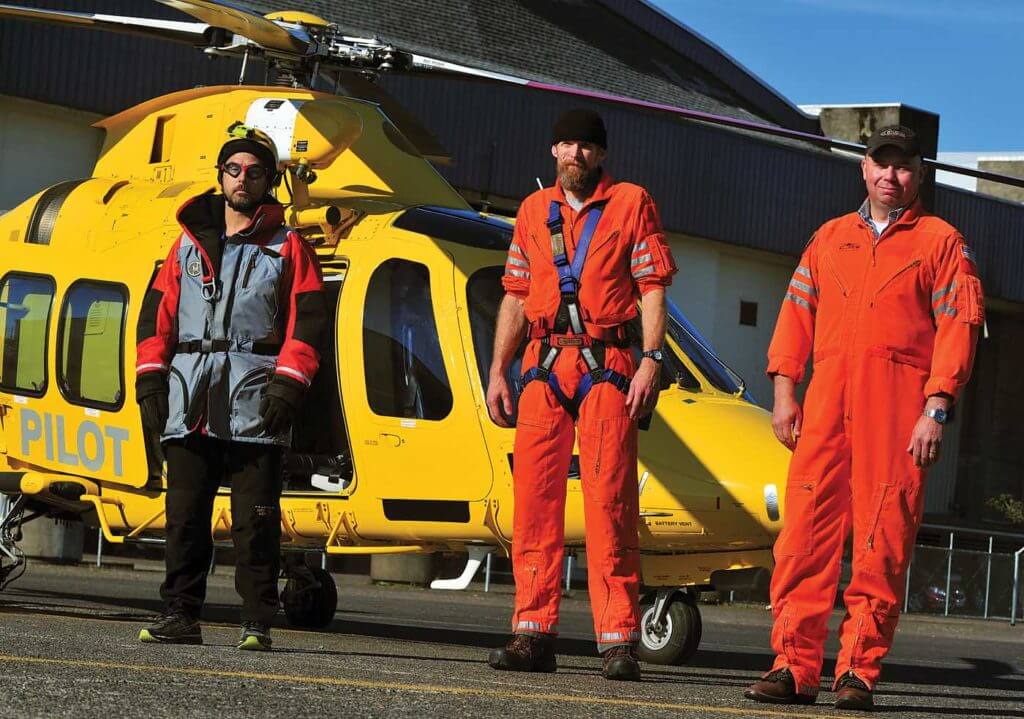
Brim Aviation operates under Federal Aviation Administration part 135 air carrier regulations, and performs most of its maintenance in-house, including standard inspections and part replacement. Component and engine overhauls are outsourced. The company employs 10 to 12 mechanics at any one time, and they go where the aircraft go to make sure they are maintained to the company’s standards.
Most of Brim Aviation’s heavy maintenance is performed at its bases in Ashland and Astoria, and it has a satellite base in Wellington, Texas, where it can do whatever is required in terms of maintenance to keep the aircraft flying.
“We are routinely in the field at remote sites, such as Puerto Rico after the [recent] hurricane, and all over the Western U.S. doing utility and animal surveys, so we routinely move parts and mechanics to these locations,” said Burl. “Our experience with MD has been they provide us with support when we need it, from parts availability, AOG [aircraft on ground] help, and general technical support.”
Looking at the state of the company’s operations and prospects for the future, Burl and Julie Brim said the strength of the utility market showed good prospects for growth.
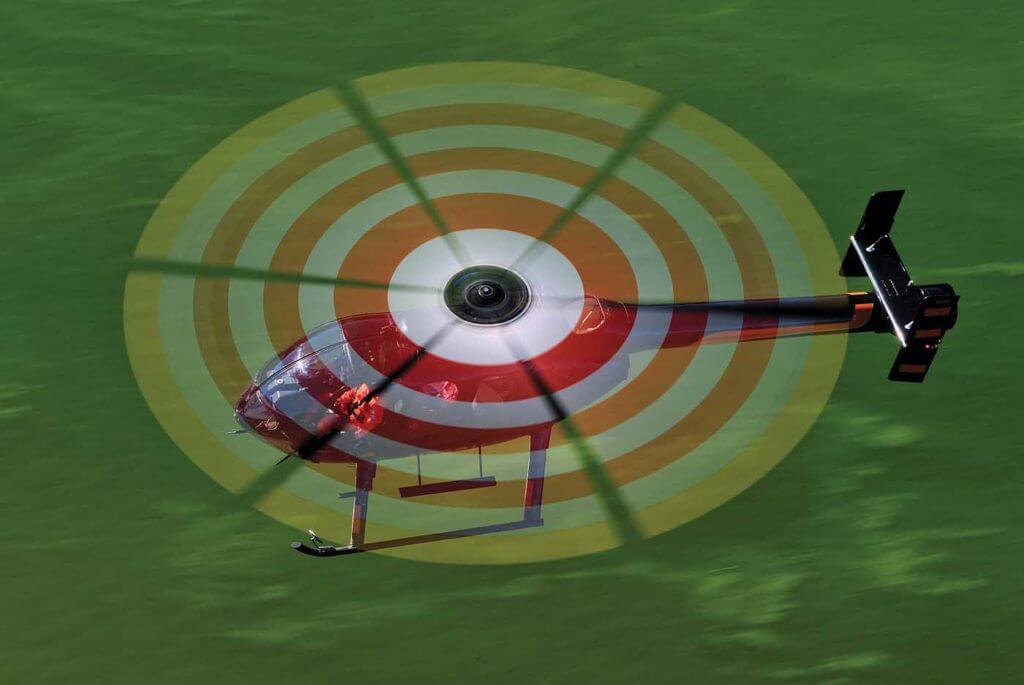
“Currently the utility market is strong, with a lot of new work created by the [need to fix the damage caused by] hurricanes and other weather events,” said Burl. “Even without these events, the whole construction and utility industries are expanding, with a focus on updating the power grid through new funding to renew the overall system.”
Julie added that they expect the economy to get stronger in the future, providing further hope for future growth. “This gives both private business and the government sectors the ability to fund upgrades for large projects — this obviously helps support businesses like ours in the long term.”





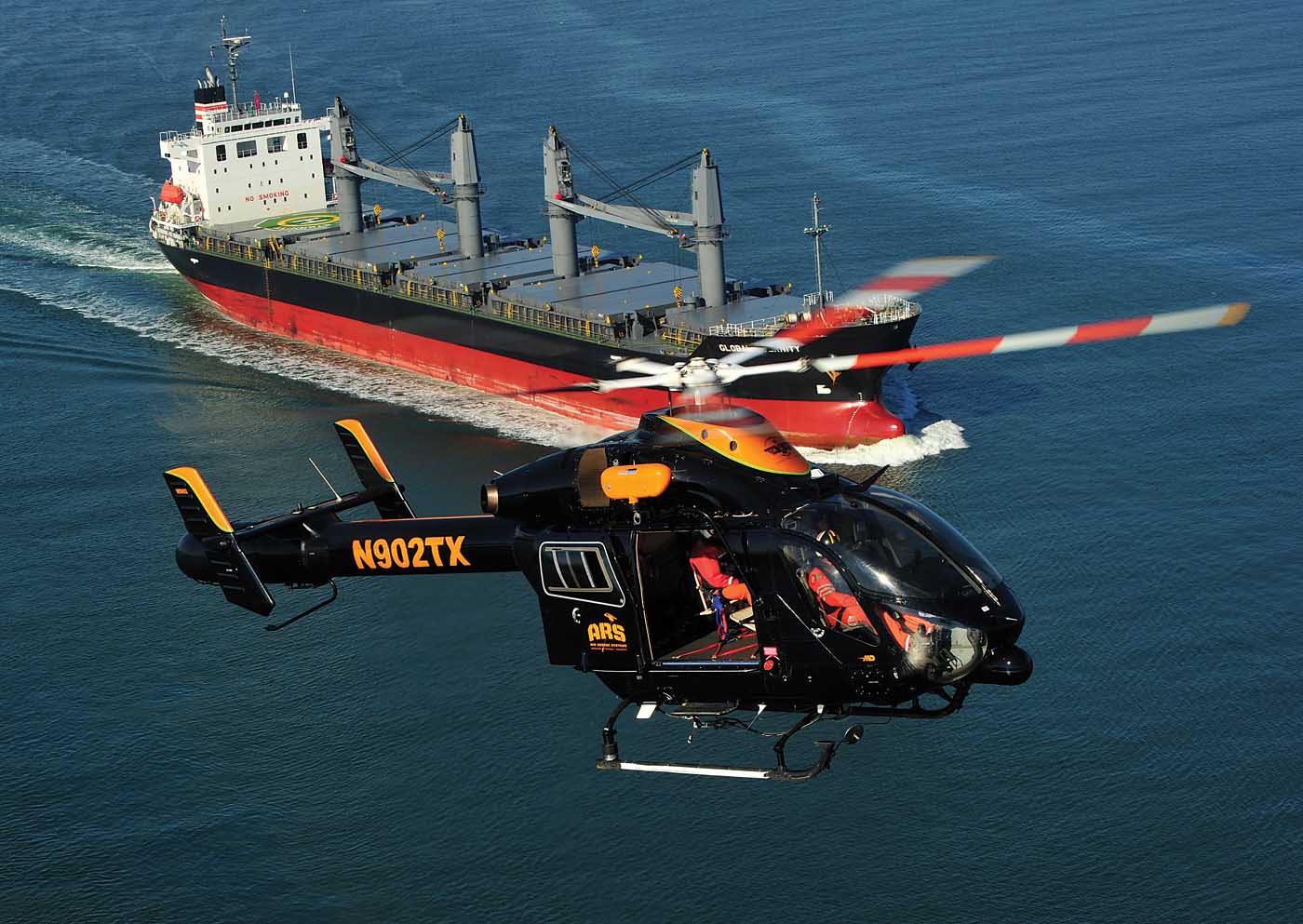
Using jet thrust to counter the torque is brilliant.